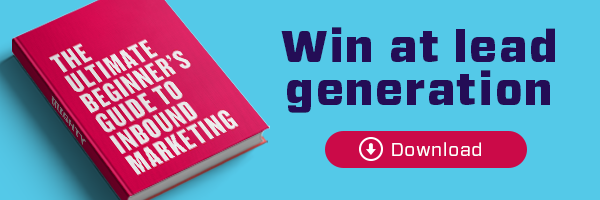You need to buy a new a new laptop. You start your buyer's journey by conducting research to learn about the specifications you will need and what your budget should be. You do this by reading blogs on what you should consider when shopping for a laptop, the latest laptop standards and what they cost. After that, you read reviews on brands that meet your specifications and budget. Finally, you decide on a laptop. After that, all that is left to do is decide where you should purchase the laptop.
This is your consumer's path to purchase. The company that is best able to meet their consumer's needs throughout this journey is more likely to convert this person into a customer. Google makes an excellent point in that the path to purchase is rarely linear. Along the customer journey, one search can spark an entirely new idea or want. It can make the difference between your brand and your competitor's.
1. Be a resource.
Consumers begin their buyer's journey through research. Inbound marketing teaches that through being a resource, a potential customer can be drawn to your site through their research process. Your website should provide information that guides your potential customers in their decision-making process with the goal of converting them into a customer.
Many companies poise themselves as a resource through blogging. Best practices teach that inbound marketers should focus their content on helping their clients rather than promoting their products and services.
Here's an example. You're an e-commerce company called Modern Tech who has a buyer persona named Freelance Fred. Fred works from home and needs a new computer. To help him, you might publish a blog article called, "Tech You Need In Your Arsenal If You Work From Home". Through Fred's research process, he lands on that blog post. Now your company has poised itself as a resource, establishing a level of trust between the reader and your company. Once the client is ready to make a decision, then your products and services can be introduced. You could publish a case study titled, "Modern Tech's 5 Best Tools For Your Home Office".
2. Place emphasis on mobile.
Over the last few years we have reached the tipping point between time spent on mobile devices and desktops. People use their mobile devices constantly- especially when making a decision to purchase. People casually conduct research while watching tv or use their mobile device to look up reviews when they are in a store trying to choose between two products.
To reach mobile users, utilize mobile-friendly platforms that work well on many devices. Creating an app that adds value to the mobile-shopping experience is also a way to engage potential customers.

3. Target by location.
Orient your messaging and targeting plans around a cross-device customer. 48% of consumers start research on a mobile device and 40% of searches have local intent. Target by location (also known as geo-targeting) to reach people not only while they are on the go based on where they are. Make your order options and inventory easy to access and understand.
4. Partner with related brands.
Searches are rarely linear. A potential customer often starts researching one thing and then realizes a need for another. This is why partnering with related brands to reach potential customers can expose customers to your brand. Google explains it best with this example from their article about winning customers.
"Serenity was planning a trip to Beverly Hills. Unfamiliar with the neighborhood and the city of Los Angeles, she went online to learn more about the area. She searched specific restaurants, celebrity tours, and even what to wear in Los Angeles.
In this case, travel plans led to her wanting to know what people wear in Beverly Hills, which then led her to shop for new, fashionable clothes. Marketers who see the connection between their products and services and complementary categories will be better able to reach consumers."
5. Use online reviews to your advantage.
Reviews are a big awareness driver whether you're a restaurant or trying to sell a product. They are the modern day word-of-mouth. When consumers are trying to make a decision between two brands or products, they often turn to online reviews see what others thought about attributes that are important to them.
Leverage online reviews in two ways:
- Claim your listing in online directories. Most directories allow a restaurant to claim their listing. Doing so allows you to post photos, respond to reviews, buy ads, and edit your business information. The directories also allow your site by allow you to link your menu.
- Listen to what people say. Online directories offer a unique way to learn what your customer really think. Watching for trends in reviews offers insight into problems as well as what your customers love.
What's the moral of story? Be there for your consumer and be helpful. Doing so will organically draw potential customers to your brand and establish trust. Start by understanding who your potential customers are by creating buyer personas. This will help you understand how and where you should be positioned in the consumer's path to purchase. Consider all the ways you can be on your consumer's path to purchase and what resources they will use in each phase of the buyer's journey. Finally, poise your company to help in each phase along your consumer's path to purchase.


